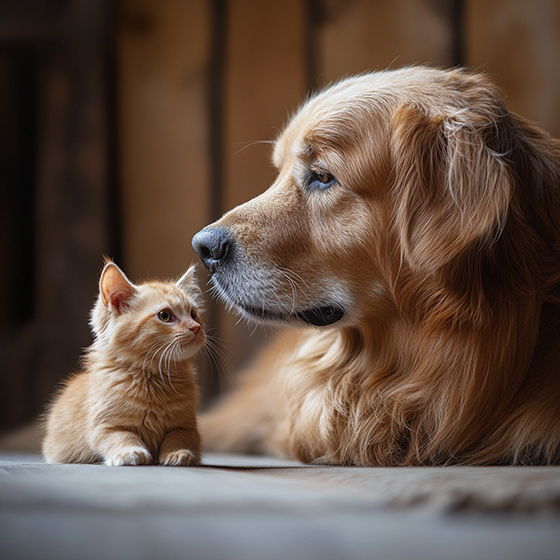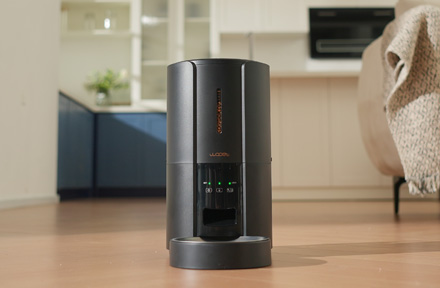Aug 30, 2024
Author:Lisa Martinez
Adopting a new pet is an exciting and fulfilling experience, bringing a new member into your family who will provide companionship, joy, and love. However, along with the excitement comes the responsibility of ensuring that your home is ready to welcome this new addition. Proper preparation can make the transition smoother for both you and your pet, reducing stress and helping your new companion feel safe and comfortable in their new environment. This guide is designed to help new pet owners create a safe, comfortable space for their pets, covering everything from pet-proofing your home to gathering essential supplies.
Before you bring a new pet into your home, it's essential to understand the specific needs of the animal you are adopting. Different pets have different requirements, and knowing what to expect can help you prepare more effectively.
Whether you're adopting a dog, cat, rabbit, or another type of pet, each species has its own unique needs. Dogs may require more space and regular walks, while cats need scratching posts and quiet spots to nap. Small animals like rabbits or guinea pigs might require specific habitats or enclosures. Understanding these needs will guide your preparation.

Take the time to research the specific breed or type of pet you’re adopting. Different breeds can have vastly different temperaments, exercise requirements, and health concerns. Knowing what to expect will help you provide the best care for your new companion from day one.
One of the most important steps in preparing your home for a new pet is ensuring that the environment is safe and secure.
Identifying and Removing Potential Hazards: Start by identifying areas of your home that could pose risks to your pet. Electrical cords, toxic plants, small objects that could be swallowed, and easily accessible trash bins are all potential hazards. Make sure to remove or secure these items to prevent accidents.
Securing Cabinets and Trash Bins: Pets are naturally curious and may get into places they shouldn't. Secure cabinets, especially those containing cleaning supplies, and ensure trash bins are covered or placed out of reach.
Setting Up a Comfortable Area: Your new pet will need a designated space where they can eat, sleep, and relax. Choose a quiet, low-traffic area of your home where your pet can feel secure. This space should include a bed, food and water dishes, and some toys.

Creating a Quiet Retreat: Pets, especially those new to a home, need a quiet space to retreat to when they feel overwhelmed. This could be a cozy corner, a crate, or a small room where they can rest undisturbed.
To ensure your new pet feels at home, you'll need to gather some essential supplies.
Choosing the Right Bed: Select a bed that suits your pet’s size and type. For dogs and cats, beds should be soft and comfortable, while small animals may need specific bedding material for their enclosures.

Selecting Appropriate Bowls: Invest in durable, easy-to-clean food and water bowls. Consider WOpet automatic pet feeders or pet water dispensers if you have a busy schedule.

Brushes and Nail Clippers: Regular grooming is essential for your pet's health. Ensure you have the right brushes, combs, and nail clippers suited to your pet's coat type and size.

Age-Appropriate Toys: Toys are crucial for mental stimulation and exercise. Choose toys that are appropriate for your pet's age, size, and activity level to keep them entertained and engaged.
Litter Boxes and Training Pads: If you’re adopting a cat, a litter box is essential. For dogs, especially puppies, training pads can be helpful during housebreaking. Also, stock up on cleaning supplies designed to manage pet messes.
Introducing a new pet to your home requires everyone to be on the same page.

Teaching Proper Handling: Ensure that all family members, especially children, know how to handle the new pet gently and safely. Discuss the importance of giving the pet space and time to adjust.
Establishing House Rules: Set clear rules regarding where the pet is allowed to go, when and how they should be fed, and how to interact with them. Consistency in these rules will help your pet adjust more easily.
Smooth Introductions: If you have other pets at home, introducing the new pet can be challenging. Start by allowing them to sniff each other through a barrier, gradually increasing their interaction time under supervision.

Monitoring Interactions: Keep a close eye on interactions between pets to prevent conflicts and ensure a peaceful coexistence.
The first few days in a new home can be overwhelming for your pet, so planning is crucial.
Setting Up Schedules: Pets thrive on routine. Establish feeding, walking, and playtime schedules to help your pet feel secure and understand what to expect each day. Consistency is key to helping your pet adjust to their new environment.

Initial Vet Visit: Schedule a vet appointment within the first week of bringing your pet home. This visit will ensure your pet is healthy and up to date on vaccinations.
Health Checks: Discuss any concerns you have about your pet's health with your veterinarian and establish a plan for ongoing care.
Basic Training Tips: Begin basic training as soon as your pet arrives. Teach them simple commands like "sit," "stay," and "come," and reinforce good behavior with positive reinforcement.
Addressing Behavioral Issues: It's easier to address any behavioral issues early on. If your pet shows signs of anxiety, aggression, or other concerns, seek advice from a professional trainer or your veterinarian.
Before your pet arrives, take care of a few last-minute details.
Creating a Pet Emergency Kit: Put together a pet emergency kit that includes first aid supplies, your vet's contact information, and any medications your pet may need.
Planning for Emergencies: Consider how you will care for your pet in case of an emergency, such as a natural disaster. Having a plan in place, including an evacuation plan and pet insurance, will give you peace of mind.
Collars, Tags, and Microchipping: Make sure your pet has a collar with an ID tag that includes your contact information. Microchipping is also a highly effective way to ensure your pet can be returned to you if they become lost.
Registering Your Pet: Some areas require pets to be registered with local authorities. Check your local regulations and ensure you're in compliance.
The best age to adopt a pet varies depending on the type of animal. Puppies and kittens are often ready for adoption at 8-12 weeks, while older pets can be adopted at any age, depending on your preference and lifestyle.
Consider your lifestyle, time commitment, and financial readiness. Pets require daily care, attention, and resources. If you’re prepared to provide for a pet’s needs and welcome the responsibility, you’re likely ready to adopt.
Give your pet time to adjust to their new surroundings. Create a calm environment, establish a routine, and provide plenty of love and reassurance. If anxiety persists, consult your veterinarian for advice.
Popular Post

What to Feed a Sick Dog With No Appetite? [2025 Guide]
May 16, 2023

Troubleshooting Common Issues with Automatic Pet Feeders: Tips & Tricks for Pet Owners
Oct 26, 2023

Why Does My Cat Cough After Drinking Water? 8 Potential Reasons
Mar 13, 2023

My Cat Only Eats A Little at A Time - What to Do?
Feb 27, 2023

Why Is My Dog Being Destructive All of A Sudden?
Feb 04, 2023
$99.99
$129.99
Copyright © 2025 WOPET. All Rights Reserved.

GET 10% OFF